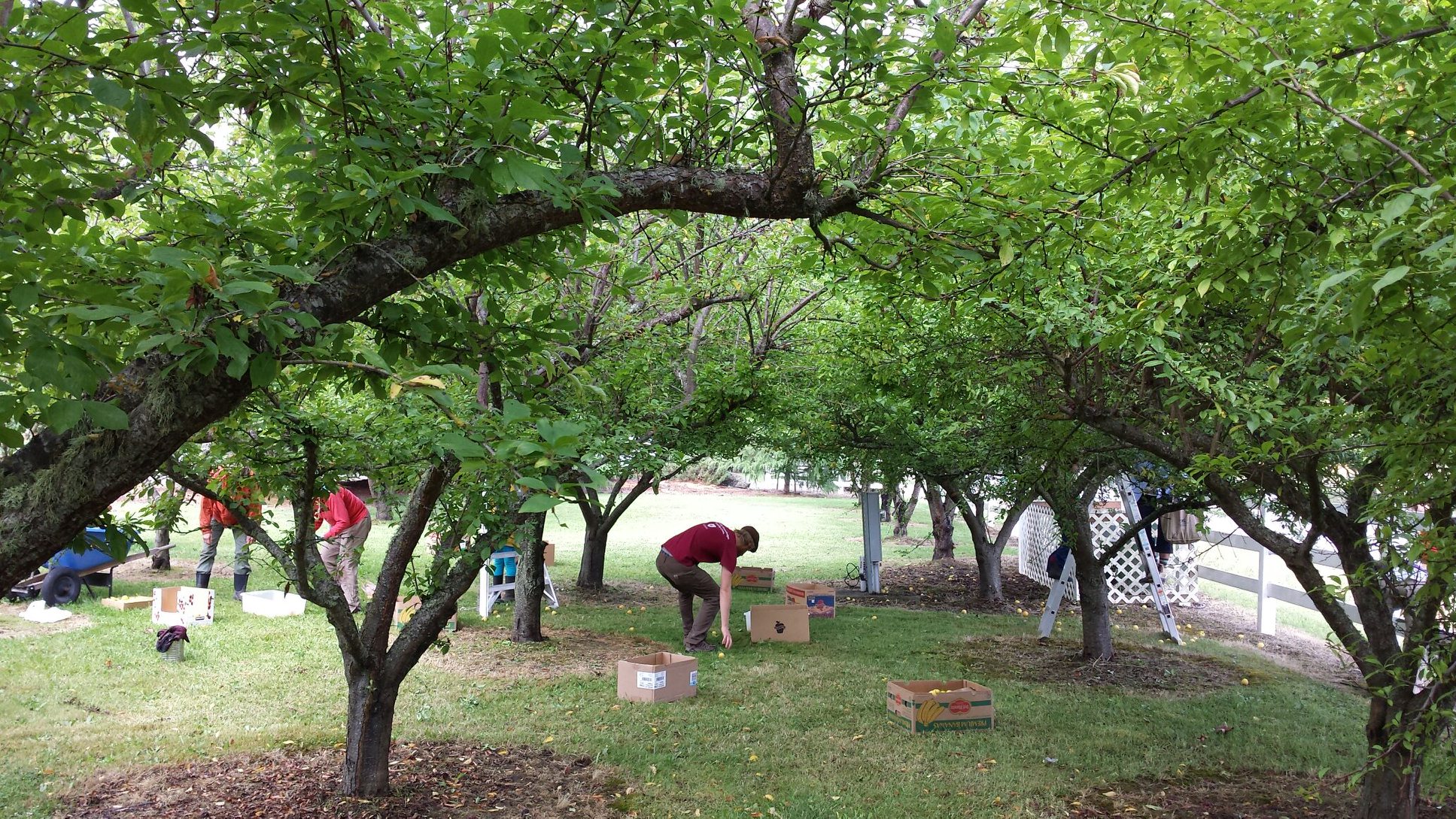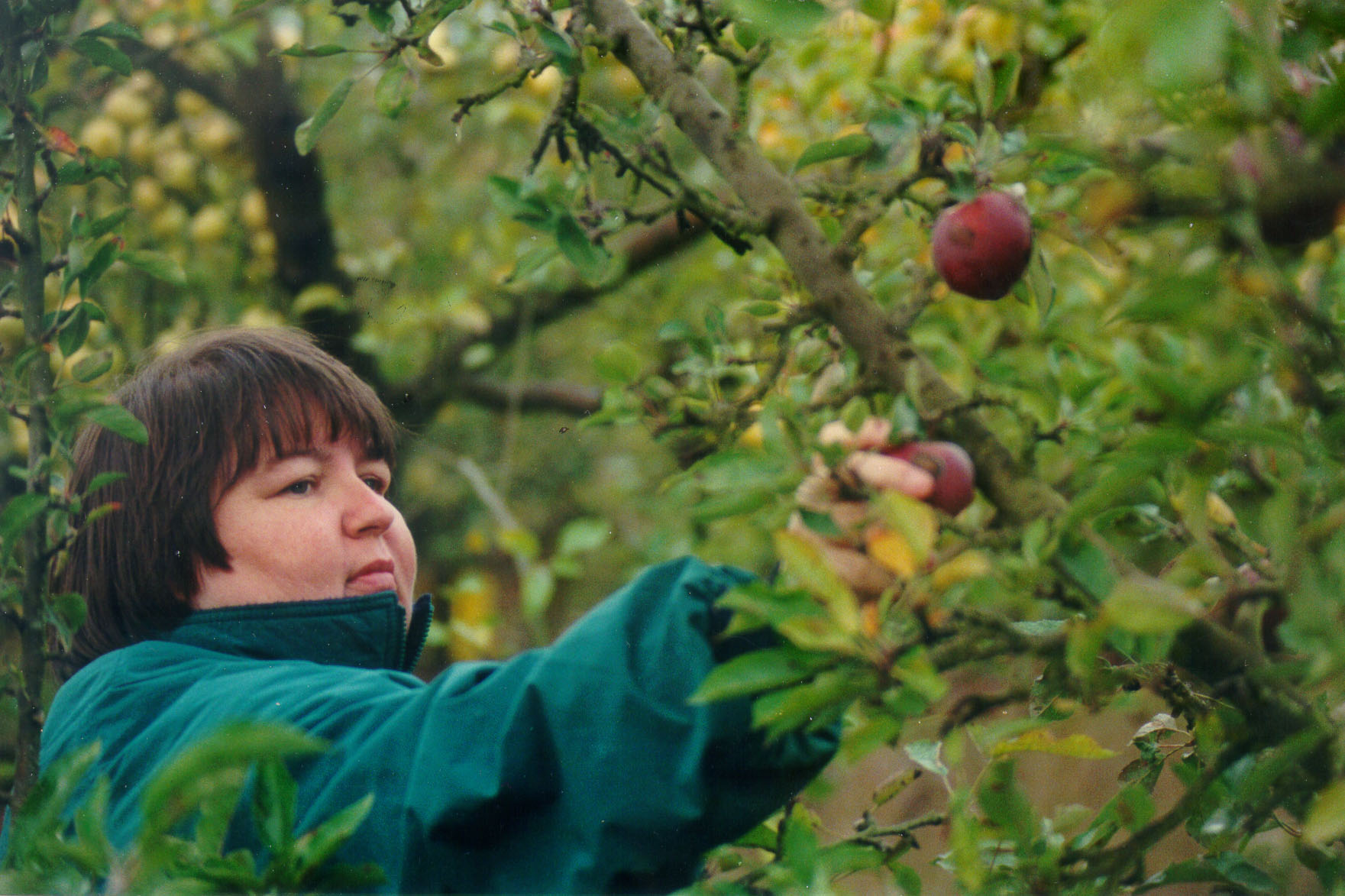
Clallam County has a rich history of home and farm orchards. The tree fruit in the area includes: Apples, Peaches, Cherries, Plums, Pears and Figs. In addition to this tree fruit, Clallam County can grow several nuts, berries, and vegetables. The environmental good fortune of the area creates many produce abundances. Tree fruit often has boom seasons and the food security agencies and clients have greatly benefited.
Safety is something to consider in any volunteer-based program. In a gleaning program, the concerns are enhanced by ladders and general liability. To address these issues, gleaners are given instruction in safe ladder use.
Having a screening process for homeowners can save a lot of headaches. When a homeowner contacts the Gleaning Coordinator they are asked a series of quick questions. Since the program is unable to visit all properties prior to a volunteer’s harvesting the “glean screen” is very helpful.
Questions to consider:
· Collect basic contact information: Name, Number, Address and Email
· How did you hear about the program?
· Type of Produce
· Number of trees (plants)
· What is the General Quality
· How much of the fruit can be harvested?
· Is it ripe now? If not, how soon?
· Do you have other produce that will be available?
· Do you have a ladder available if it is needed? If not, what size ladder should a gleaner bring?
Other things to consider: parking conditions, animals, evidence of bug infestation, over-ripeness, the height of trees. (This will grow the more you talk with homeowners)
In many ways, gleaners are the face of the program. They are the ones literally in the field (and orchards) that directly interact with donors. It never hurts to remind gleaners of their importance to the sustainability of the program. Giving thanks and cleaning up after oneself can go a long way. Sometimes property owners would like a few pounds left on the trees or picked for their families. Encourage gleaners to talk with donors before and after harvesting. At the WSU Extension Office in Clallam County, gleaners are asked to practice the three “C’s” of gleaner etiquette. Call ahead to let the homeowner know they are coming and to gather any more information about the site; Come prepared with ladders, fruit boxes, directions to the home site; and Carry through with the glean (or call and let the homeowner and Gleaning Coordinator know if they are unable to glean after all). Homeowners will be disgruntled with the program if they arrange to be home to meet a gleaning volunteer, and the volunteer never shows up.
In an abundant fruit year, volunteers may need more ideas on where to donate excess produce. Give them a list of Donation Sites, along with the days and hours that these sites accept produce, to facilitate the drop-off. PRODUCE DONATION DROP OFF SITE LIST



